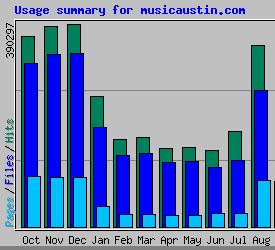I run a site called MusicAustin. I redid it a few months ago with a CSS layout and a menu system from Project Seven called Pop Menu Magic. It’s a great menu and I really like the features. Take a quick side trip over to MusicAustin to see how it works if you aren’t familiar with Pop Menu Magic.
My traffic and my search engine results fell almost immediately, as you can see from the Webalizer stats in the screen capture below.

It took me a while to notice the drop in traffic and the lousy search engine placement; then it took me a while longer to figure out why. Once I fixed it (in August) you can see that my traffic bounced right back up near its former level.
My problem was that I had some of the top level menu items with nothing but <a href="#"> in the anchor element. The search engines weren’t finding anything to follow. I’d broken the path to the secondary level list and the pages they referenced. The solution was to make sure that every link in the top level list actually went to a page, even if it was one of the pages mentioned in the subnav that popped out on hover.
You know, I’ll bet the supporting documentation for Pop Menu Magic mentions this. So my aplogies to everyone at Project Seven (I love you guys) if all I had to do was RTFM. But I have to learn everything the hard way, and this is just one more proof of that sad fact.